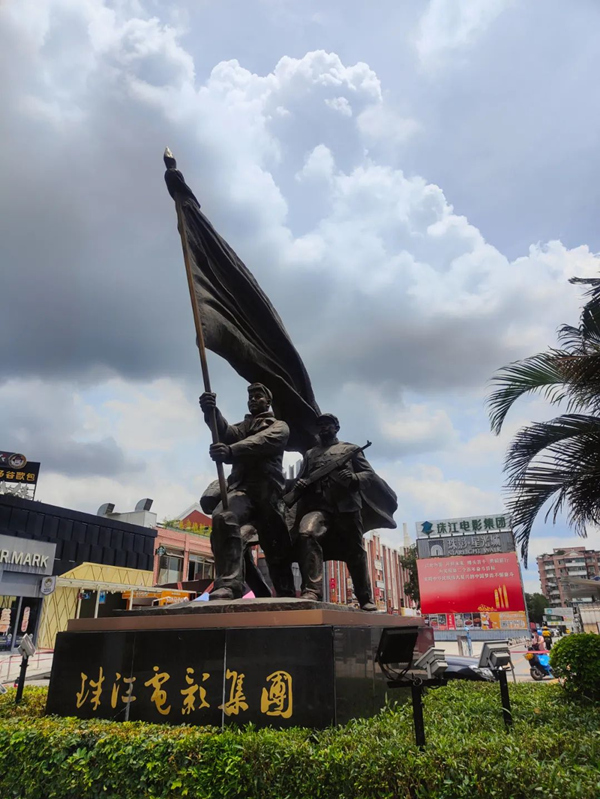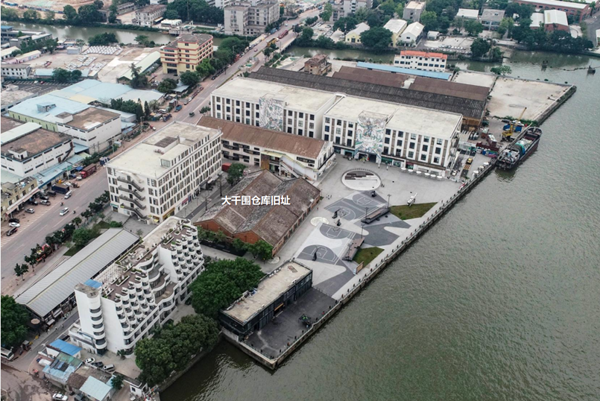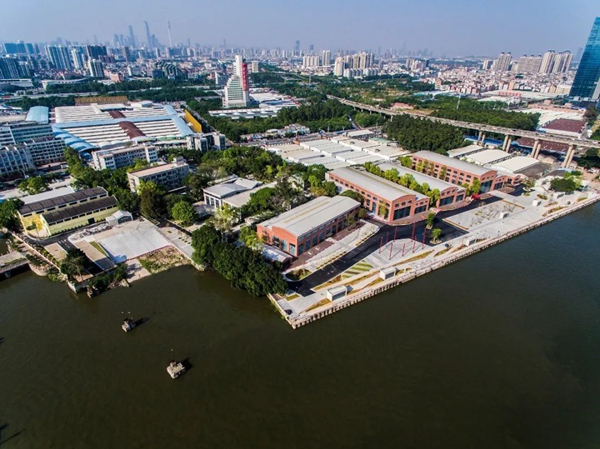4 structures in Haizhu make historical buildings in Guangzhou list
On July 14, the Guangzhou municipal government announced the seventh batch of historical buildings in Guangzhou, which includes four buildings in Haizhu.
There are a total of 13 historical buildings in the seventh batch, and the ones from Haizhu are the Zhujiang Film Studio Administration Building, Daganwei Warehouse, Chenganwei Shipyard and Guangzhou Textile Machinery Factory.
The former administrative building of the Pearl River Film Studio is located on Chigang Street. Founded in the 1950s, the Pearl River Film Studio was the earliest, largest, and most powerful comprehensive film production enterprise in South China. Its administration building still retains core historic elements like its building facade, the soundproof studio in the film review room, and the heat dissipation and exhaust vents on its roof.

Pearl River Film Studio. [Photo/WeChat account: gzhzfb]
The Daganwei warehouse area is located on Nanzhou Street. Built in the early 1950s, the area exemplifies storage facilities along the back channel of the Pearl River. Its core historic elements are its building facade and reinforced concrete portal frame structure, which has a smooth structural design, which is relatively rare among warehouse buildings in Guangzhou. It is currently the site of the Yi Jianlian Basketball Training Center.

Daganwei warehouse. [Photo/WeChat account: gzhzfb]
The core value elements of the former site of Chenganwei Shipyard are the building facade, main structure, launching slides and steel rails. The four main workshops in the old shipyard site reflect the overall appearance of the shipyard.

Chenganwei Shipyard. [Photo/WeChat account: gzhzfb]
The former site of the Guangzhou Textile machinery factory is located on Xingang Middle Road. It contains six buildings, including an assembly workshop and a wood mold workshop. It was built from 1950 to 1970, and reflects the characteristics and development of the textile machinery industry and Guangzhou Textile Group. Its core historic elements are its building façade and its main structure. In 2009, Guangzhou Textile Group transformed the premises into a creative park. In 2020, the park had an output value of over 21 billion yuan, generated 1.8 billion yuan in tax revenue and provided 4,000 jobs.
All rights reserved. Presented by China Daily

